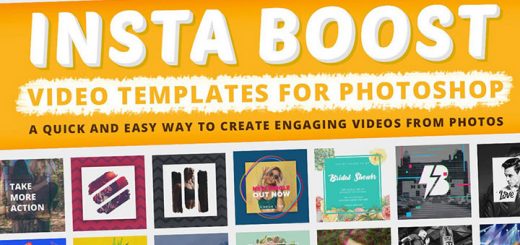12 Ways to Increase Website Traffic
The day you launch a new website is a big deal.
But for all the hard work involved in creating a website, getting one up is just the beginning.
Now you need to do the harder work of getting people to visit your website. New website owners (and plenty of veteran ones as well) struggle with the question of how to increase website traffic.
With billions of other websites competing for attention, how do you get people to find yours to begin with, and choose to click in the face of other options?
There’s SEO, SEM, social media, PR, influencer marketing, and so much more. Which should you invest in to increase traffic to your particular website?
Let’s dig in.
12 Ways to Increase Website Traffic
While the right strategy will differ for every website, there are a few main tactics you can use to increase web traffic.
1. Do on-page SEO (search engine optimization)
One of the main ways potential customers find websites online is through search. Think about it: when you have a question you need answered or want to find the best product to solve a problem, where do you turn? Probably Google.
With over 3.5 billion searches performed on the search engine every day, you can bet most of your target audience are using it regularly.

Websites that claim one of the top spots in Google for a popular term can count on getting consistent site traffic from it. This top spot will help to increase brand awareness and is a pivotal component of any digital marketing strategy.
That makes search engine optimization an important tactic for increasing website traffic of potential customers. The first (and easiest) steps for SEO are doing on-page optimization. That includes:
- Choosing a relevant keyword or two for each page on your website
- Customizing your URL, title tag, and alt image tags to include your target keyword
- Adding a meta description for each page that describes what’s on the page and includes your keyword
- Strategically including the keyword in the web page’s headings and copy, but only where you can do so naturally
2. Practice link building
The search engines want to provide results that are useful and authoritative. Backlinks are one of the primary signals they look at to determine which web pages have the best information.
Link building is one of the hardest parts of SEO, but one that’s important to improving your rankings. And since few people click on any links on the search engine results page (SERP) below the top three, link building is crucial for gaining those top spots that will actually help you drive traffic.
Creating great content is an important step in link building (more on that in a bit), but you can also use more proactive tactics, such as:
- Reaching out to bloggers in your industry to share resources you’ve created they may appreciate.
- Letting website owners know about broken links on their site that they can replace with a link to your site that covers the same topic.
- Writing guest blogs on relevant sites that include a link back to your content.
- Contacting websites that mention your brand but don’t include a link now, asking them to add one.
Link building can require a lot of work, and a lot of link-building outreach emails go unanswered, but each link you earn on a quality site boosts your website’s authority with the search engine algorithms.
3. Use search PPC ads
SEO is a powerful way to get more site traffic and build brand awareness, but it’s a slow process. It typically takes months to start seeing results from long-tail keywords (those that are specific and have a relatively low search volume) and years to start gaining rankings for more popular keywords.
You can start gaining traffic from the search engines immediately by using PPC ads to promote your new website. These ads show up on the search engine results page for certain long-tail keywords, as well as on websites around the web.

With PPC, you have control over:
- What your ad will look like – you provide the title, text, images (when applicable), and any extensions.
- Who will see it – you can set up specific audiences based on demographic details, geographic location, and behavioral data.
- Where it shows up – for ads on the search engine results page (SERP), keyword targeting ensures you only show up for relevant searches. For those on the display network, you can choose which types of websites to show up on, and exclude any that aren’t a fit.
- How much you pay – PPC ads use a bidding model, so you can set your maximum budget and determine which keywords and placements are worth the cost to you.
4. Use social ads, too
Social media is another good channel for increasing traffic to your website, but social media marketing comes with a big downside: the only people who see your updates are those who already follow you, unless your followers share them.
That makes it hard to get traction. And you won’t start getting traffic from social media until people see your posts.
Social ads can jumpstart your social media platforms, increasing your visibility and helping you get new followers. As with search ads, most social advertising is PPC, so you only pay for the actual traffic you get. And the social platforms provide useful targeting options as well, to help you reach the right audience.

5. Invest in content marketing
The more useful information you have on your website, the more reason you give people to visit it.
Content marketing is the practice of consistently publishing content that’s valuable to your target audience. It’s great for SEO, because it means your website stays fresh and current and gives you the opportunity to cover more of the keywords your prospects are searching for.
And it gives you something attractive to promote on many of the other channels covered here. For instance, a PPC ad promoting a valuable piece of content may drive more traffic than one that goes to a product page in some instances.
6. Be active on social media
Social media is a great way to connect directly with your target audience and prominent figures in your industry. As previously mentioned, social ads are a great way to expand your reach on social, but you shouldn’t stop there.
Take time to share your content and insights on your social platforms. Look for opportunities to interact with people in your industry.
Participating in the community via gatherings like Twitter Chats and Facebook Groups can get you on the radar of the people you most want to reach. And joining conversations on topics in your industry shows that you’re not just using social media to promote, you’re also there to listen and make connections.
Sometimes actions that aren’t directly about driving traffic in the moment can help you establish a following that leads to increased website traffic in the long term.
7. Leverage email marketing
The first hurdle in gaining more website traffic is helping people learn about your website for the first time. But the second—and just as important challenge is getting them to come back again. Someone can visit your website, like what they see, but then click away and forget all about you.
Email marketing is an important tool for turning those visits into relationships and increasing your website traffic.
If a visitor takes a few seconds to sign up for your email list when on your site, they give you an opportunity to provide reminders about your website so they keep coming back. And you can use incentives like discounts or links to helpful content to increase the likelihood of turning subscribers into repeat website traffic.
8. Implement schema markup on your website
The main goal of SEO is to get your web pages showing up high in the search rankings, but you’re limited in how much control you have over how they look when they show up. You can add a title tag and meta description to signal to Google how you want those parts of the result to show up on the SERP—that’s part of on-site optimization.
Another big thing you can do is add schema markup to your web pages.
Schema markup is an extra way to tell Google what’s on your web page and how to read specific parts of the page. For example, if you have a cooking blog, you can use schema markup to tell Google that a page includes a recipe, what the main image for the recipe is, how many calories it has, and how long it takes to make.

If Google chooses to pick that information up when displaying it on the SERP, it can help draw more attention to your page and increase the likelihood that someone will click on your link rather than someone else’s thereby increasing your website traffic.
Google’s Structured Data Markup Helper makes it easy to get the HTML for adding schema markup to each page on your websites.

9. Go after press opportunities
Public relations professionals are skilled at helping businesses get coverage in respected publications. If your website gets featured in a relevant industry resource or even better, a high-profile publication like the New York Times, you can count on it driving more website visitors your way.
You’ll get better results if you hire someone who knows the ropes, but if you don’t have the budget to hire a PR consultant, there are still some steps you can take on your own.
Sign up for Help a Reporter Out emails to look for relevant opportunities to pitch yourself or your team members as an expert source. Research local and niche industry publications that cover businesses like yours, and send them updates when you have something newsworthy to report on.
10. Partner with influencers
So much in life is about who you know. Getting attention online is no exception. Online influencers people in your industry who have built an audience are a valuable resource to get your website in front of more people.
Influencer marketing involves identifying the most popular blogs and social media accounts in your industry, and cultivating relationships with the people behind them.
Sometimes influencer marketing involves paying people to share information about your brand or content with their audience. Other times, it’s more about finding opportunities to feature them that are mutually beneficial, such as interviewing them for your blog or having them as a featured guest on a webinar.
By working with the people that already have the trust and attention of your target audience, you can reach new people and increase traffic to your website.
11. Build thought leadership
Thought leadership is a buzzword in the marketing world, but it gets a lot of attention for a reason. If you can position the people behind your brand as go-to experts on the main topics you cover on your website, people will start to seek you out when they need more information on those subjects.
That means journalists and bloggers may come to you for source quotes and interviews, podcasters may ask you to be a guest on their shows, and you may be the featured expert in videos and webinars.
The more that happens, the more people in your audience will turn to your website for answers, increasing website traffic as a consequence.
12. Learn from your website analytics
Everything on this list takes work. There’s no point in spending money, time, and energy on traffic strategies that don’t get results.
But you can track how well each tactic you try pays off by checking in with your analytics as you go. Google Analytics tracks not only how much web traffic you get, but also where it comes from.

You can figure out how well your SEO efforts are paying off by seeing how much organic traffic you receive, and checking which pages it’s coming to. You can check on your social media progress by seeing how much of your traffic comes from social, and which specific channels are driving that traffic. And you can measure the success of tactics like thought leadership and PR by paying attention to the links and mentions you get around the web.
Analyzing these metrics as you go will ensure you know what strategies are paying off the most, so you can focus more of your energy on the work that gets the best results.
Source: Hostgator’s Blog








